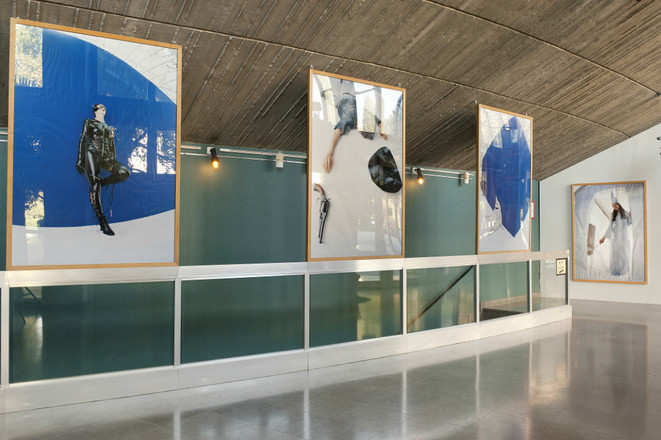The works shown reveal the diversity and evolution of issues in art since the end of the 1960s-70s, an avant-garde, militant period, until the 2000s, a new urban and virtual era, by way of the fun culture of the 1980s and the advent of postmodern aesthetics at the end of the twentieth century.
Four generations of artists thus embody first Narrative Figuration and the New Wave (Monory, Varda), body art and feminism (Journiac, Messager, Orlan) and the degré zéro in painting and the prevalence of in situ works (Buren), and also the appearance of inventories with an obsession with regard to questions of memory (Boltanski). Fresh air then arrived with Figuration Libre (the paintings of Combas and Di Rosa), while sculpture ironically took possession of everyday objects (Bossut, Lavier, Leccia). The increasing blurring of categories in art, interest in the relation with visitors and the experience of the work (Scurti, Beecroft) in the 1990s led little by little to the present set-ups that analyse the conditions of the production of images (Huyghe, Joseph) or play on the relation between reality and fiction (Grasso).
4 x 10
Œuvres de la Collection IAC, Rhône-Alpes
from to
Elisabeth Ballet, Vanessa Beecroft, Ben (Ben Vautier, dit), Jean-Charles Blais, Christian Boltanski, Étienne Bossut, Daniel Buren, Robert Combas, Hervé Di Rosa, Laurent Grasso, Pierre Huyghe, Pierre Joseph, Michel Journiac, Valérie Jouve, Géraldine Kosiak, Bertrand Lavier, Ange Leccia, Annette Messager, Jacques Monory, ORLAN, Franck Scurti, Henry Ughetto (ou Henri Ughetto), Agnès Varda

1 / 2
Pierre Joseph, Little Democracy (detail), 1997
View of the exhibition 4x10, 15 October – 14 January 2012, Galerie d'exposition du Théâtre de Privas, Ardèche.
© Blaise Adilon
© ADAGP

